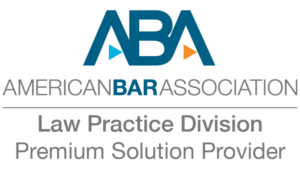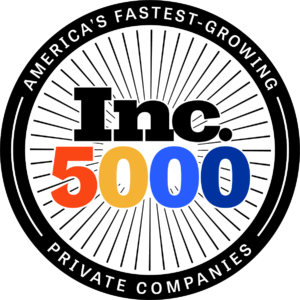How to Write a Follow-Up Email After Your First Client Meeting
Taking the time to write a follow-up email or letter can help build meaningful relationships, expand your network and earn the trust of clients, and help keep your name, image, and/or business in the mind of your target audience.
Employers may conduct several interviews a day for new prospective employees, customers search for products and services from a sea of different vendors, and clients might look at many businesses to provide solutions and assistance with their problems before committing to one. It will do you wonders to know how to craft an exemplary email for several occasions.
Email Writing Rules for Success
Before you set out on writing a follow-up email or letter, it will help to know some essential elements to ensure that you’ll make a good impression. Rather than creating a cookie-cutter email, stand out above the crowd by keeping the following advice in mind.
- Have Your Goal In Mind: No one wants to take the time to read an aimless email. If your email doesn’t have a clear objective in mind, you may reconsider sending it. Determine whether you want to say thanks, offer help, establish what steps to take next, or just ask for feedback. Whatever the nature of your email, it will be appreciated if it gets directly to the point to not waste the reader’s time with flowery or meaningless wording.
- Be Authentic: A sincere email will set you apart from the others. Let the reader know you relished the chance for a meeting, share what you both have in common, or mention and expand on what you discussed in the meeting. Anything specifically genuine about your meeting should be made a point of emphasis to build a better connection with the reader.
- Keep It Simple: If you have a clear goal in mind, keeping your letter short will not be a problem. Getting to the point and avoiding droning on about your meeting will let the reader know that you value their time. Typically, the shorter the email, the higher likelihood it will be read and requests will be carried out.
- Follow Up Promptly: To avoid being immediately forgotten, send a follow-up email within 24 hours. However, there are exceptions to this general timeline. For instance, a follow-up 24 hours after a job interview may not be appropriate as the employer will not have had a chance to deliberate on you or interview others to determine if you’ll be the best hire. It will be crucial to understand the proper response time to send a follow-up email for different situations.
Lastly, be sure to proofread your email before you send it. It is unprofessional to send an email full of spelling and grammatical errors and may hurt your chances of building a relationship.
Post-Meeting Email Templates
Now that you know what needs to go into an email, you can apply these elements to emails for different occasions. Use the following email templates for inspiration and for a better understanding of how to use the above writing tips for a follow-up email that will land with the recipient.
After a Networking/Marketing Event
You can meet many people during a trade meet or industry conference. At these events, you may talk about sending over useful resources for their business or perhaps speak about a business deal or partnership. To stand out and demonstrate authenticity, include these in your email.
Subject Line: This [Resource] Should Help With Your [Objective]
Hi [Name],
Thanks for meeting with me at [event], I enjoyed chatting about [industry]. I was reading [industry publication] and thought it may provide some solutions to the issue we spoke about for your company.
I’d be happy to speak about this or send you over some more research about this subject if you are interested. Thank you for chatting at [event], I look forward to speaking again soon.
Best,
[Name]
General Thank You
Generally, a thank you email should be sent within 24 hours, especially as a follow-up to a prospective client interview. This email should contain a heartfelt thank you, what you learned from the meeting, and some reference to the next steps, follow-ups, or your goals for working with the prospective client.
Subject Line: Thank You For Your Consideration
Hello [person’s name],
Thank you for taking the time to meet with me today to discuss [topic of the meeting]. I believe I am well suited to fulfill the duties associated with your inquiry, and my experience with [provide relevant experience] will help me serve you.
I appreciate the opportunity to connect with you and learn about [company/personal situation] and would love the chance to work with you. If there are any further questions I can answer for you, please don’t hesitate to ask. Again, thank you for setting aside the time to speak with me, and I look forward to speaking with you in the future.
Regards,
[Name]
Request for More Information/Follow-Up Meeting
If you are a business that met with a customer recently, you may want to check in with them and send a follow-up email. Here, remind the client how you can provide solutions for their pain points, provide evidence of how you have helped clients with a similar problem, and ask if they would like to meet again.
Subject Line: Thank You For Meeting With Me
Hi [name],
Thank you for taking the time to meet with me today and chatting about [customer pain point(s)]. We at [company] believe we can provide solutions to your problem.
If you’d like to speak further, I am free [provide two sets of dates and times]. If any of these times work for you, I’d like to speak about how you’d like to advance. Thanks again for considering [company] for your [problem] needs, and we’d be happy to answer any questions you have.
[Your name]
Clients That Were Turned Down
Sometimes, you may find that you are too busy to take on an additional customer. Rather than leaving them guessing, it will help to maintain your relationship and open the door for future collaborations down the road.
Subject Line: We Cannot Take on Any Customers at This Time
Hello [client name],
We regret to inform you that we are not taking new customers at this time. We appreciate that you took the time to consider [company], but [provide reasons you are busy] has all of our staffers busy and we fear we won’t be able to give you the proper attention you need.
We will reach out to you in the future when we have the staffing abilities to provide you with the care you need.
Regards,
[Company]
After a Cold Ask
Despite what you may have heard, cold calling is still an effective lead generation tactic. With a 330:1 call-to-appointment ratio (out of 6,000 calls) and a 209:1 call-to-appointment-or-referral ratio, cold calling still generates a significant amount of leads. This email should ask if the recipient is still interested in doing business, however, without being too pushy.
Subject Line: [Company Name] Believes We Can Help You
Hello [client name],
We spoke briefly on the phone about if you’d be interested in our services. We would love to set up a time to meet and discuss any questions or concerns you may have about working with [company].
If you’d like, give us a call at [phone number] or email us to set up an appointment.
Best,
[Company]
It will help create a genuine introduction if you craft an engaging subject line. Additionally, feel free to include your LinkedIn profile link or any other appropriate social media channel so the recipient can get to know your business a little more.
Many businesses, private practitioners, and even lawyers need a way to generate leads. A follow-up email can generate leads as well as help you pursue your client in a natural, authentic way. Those who want to just send a thank you — for an interview or meeting of any kind — will help build their network with professionals in their field simply by taking a few minutes to craft a follow-up email as well. Taking the time to write a well crafted follow up email can lead to securing clients and possibly getting that new job.
Law firms who need to Find New Clients are facing a big problem.
Potential clients are searching online for an attorney, and it’s increasingly difficult for law firms to stand out in search results.
Here’s how Legal Leads help.
1) We use 20 years of online advertising expertise to make sure potential clients in your region can find your law firm. As they search for an attorney, we route them to you as a Legal Lead.
2) Legal Leads are EXCLUSIVE and delivered in REAL-TIME through the web or LIVE on the phone. This means you can respond to leads right in the moment they reach out for help. It’s the best time to win them as a new client.
You only pay when you receive a lead. You can stop at any time, and you have an excellent customer support team to help you succeed!
CREATE YOUR ACCOUNT at 4legalleads.com/lawyers. It only takes a moment. Then, we’ll be in touch to help you complete your setup so you can start finding new clients!





